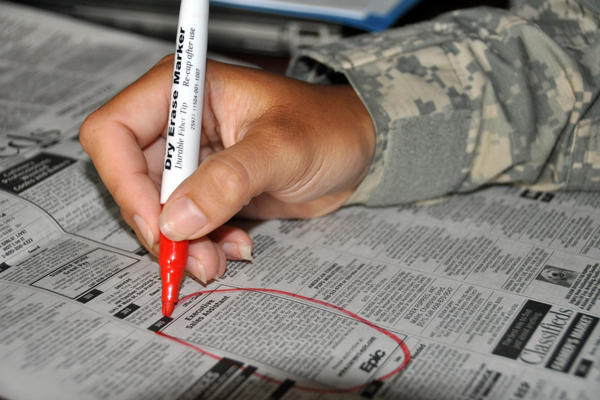Monster (NYSE: MWW) and Military.com have released the results of their most recent national Veterans Talent Index (VTI), indicating confidence is up on the part of veterans and employers.
The overall veteran unemployment rate is half that of the rate in 2011, which was nearly 10%. According to the VTI, a comprehensive analysis of transitioning military service members, veterans and their employers, two-thirds of employers report they hire veterans not out of a patriotic obligation, but because employers believe veterans are the best qualified within the candidate pool.
"Generally, the process of changing attitudes and building confidence in a population tends to be slow," said Greg Smith, president of Military.com and retired Navy rear admiral. "However, in four short years, both employers and veterans have done so with great results. Veteran unemployment is down and confidence in their ability to achieve success in the civilian sector is up, thanks to the tireless efforts of many."
Veteran Talent Index: Key Findings
Employment conditions for veterans vary by location. Among the top 10 states with the strongest veteran labor forces, the best veteran employment rates are seen in Ohio, Virginia and Texas. Surveyed female veterans, more so than males, feel it is important to live near a veteran hospital or a military base. Veteran unemployment rates are over two percentage points lower than non-veteran rates in Mississippi, Louisiana, South Carolina, Ohio and Connecticut.
Veterans aim to further their civilian skill sets. Most veterans demonstrate a drive to become more employable by obtaining future skills through on-the-job training (29%) or enrolling in a college or advanced degree program (28%). Roughly 83% of veterans have already used or plan to use their GI Bill to pursue further education or training.
Some key findings in the VTI indicate location could influence the chances of a veteran finding a job. The best veteran employment rates are in Ohio, Virginia and Texas while veteran unemployment rates in Mississippi, Louisiana, South Carolina, Ohio and Connecticut are lower than non-veteran rates in those same states. The report also included information on veterans' desire to further their skill sets through on-the-job training or enrolling in a college or advanced degree program. Eighty-three percent of those surveyed indicated they planned to use their GI Bill benefits to assist in paying for further education.
Employers have respect for veteran skills. Eighty-eight percent of surveyed employers, up from a 78% average since the first survey, report veteran skills are relevant to a civilian career. Employers value many veteran soft skills, including their dedication, discipline and good work ethic. Employers report an increased level of encouraging feedback regarding veteran work performance.
Nearly all employers believe veteran workers perform their job about the same or better than non-veteran workers. Employers rate veterans about the same or better when it comes to specific attributes such as career advancement, job turnover and retention rate; the spring 2015 rates are each the highest in the survey's history.
Some veterans have compared the difficulty and stress of moving from military service to civilian life with what people might experience when immigrating to a new country. Transitioning service members must often adapt to unfamiliar work environments, new cultural norms and even entirely new ways to communicate with others. Many veterans have reported their transitions were among one of the most difficult things they have ever done.
"Everyone who has committed time, talent, money and effort to finding solutions to veteran unemployment should take pride that their efforts have contributed to a national solution that is working," Smith said. "However, before we declare victory, we still have much to do.
"Unemployment among our youngest veterans, 18-24 years old, is still stubbornly high at over 18%; female veteran unemployment is higher than that of their male counterparts; and one out of every three veterans return to civilian life with a service-connected disability. I challenge all to redouble our efforts to ensure every returning veteran has a meaningful job."
The July 2015 Veteran Talent Index contains a wealth of useful data and findings related to the current veteran employment situation. To view the complete VTI report and results, visit www.monster.com/about/veterans-talent-index.
Want to Know More About the Military?
Be sure to get the latest news about the U.S. military, as well as critical info about how to join and all the benefits of service. Subscribe to Military.com and receive customized updates delivered straight to your inbox.











